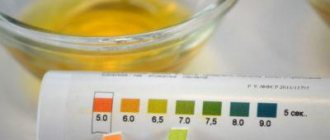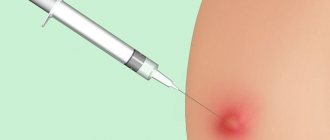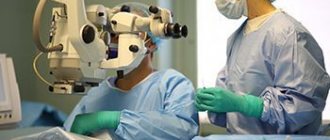Destruction of the physical sphere of life
These are the consequences of drug addiction on a person’s life that we notice first. Taking drugs undermines the health of the addict, and the harmful effects occur not on any one organ, but on the entire body as a whole. Each intoxication with toxic substances strikes the most important organs of the body, the brain, liver, kidneys, lungs, and heart are primarily affected. With drug use, the body weakens and copes worse with the elimination of toxins, so drug metabolites accumulate in the tissues of all internal organs, circulate in the bloodstream, affect living cells of the body and lead to the development of pathologies.
Consequences of drug addiction depending on the type
All drugs have a physical negative effect on the human body and psyche. However, due to the characteristics of certain substances, their effects on physiological processes vary.
Consequences of eating salts
Salts are dangerous drugs, even a single dose of which can cause severe addiction. The state after taking a drug containing salt is a destroyed body, mental degradation, paranoia, suicide.
Consequences of psychotropic drugs
Psychotropic drugs include cocaine, amphetamine, methamphetamine and others. The functioning of the cardiovascular system worsens - tachycardia, ischemia, and heart attack develop. The central nervous system suffers: hallucinations, psychoses, and attacks of paranoia occur.
Consequences of pharmacy drug addiction
Pharmaceutical drugs, taken even in the recommended dosage, affect human health. Increasing the dose in order to obtain a narcotic effect leads to severe adverse reactions. The result is often:
- hallucinations;
- tachycardia;
- hypertension;
- rash;
- vomit;
- rave;
- convulsions;
- coma;
- panic attacks;
- unbearable headaches.
The use of pharmaceutical drugs can cause death.
Consequences of heroin
Taking heroin often ends in the death of the addict. The narcotic substance rapidly destroys human organs, quickly suppresses the immune system, which provokes the addition of a huge number of infections. Heroin causes disruptions in the functioning of all organ systems, from the skin (inflammation, gangrene) to the heart (heart attack).
Consequences of cocaine
Cocaine leads to inflammatory processes in the gastrointestinal tract, bringing tissue to a state of necrosis. Its use provokes the development of tachycardia, myocardial spasms, heart attack, and coronary artery disease. The lungs suffer: pneumothorax and internal bleeding may develop.
Destruction of the emotional sphere of human life
On the one hand, the destruction of the emotional sphere is associated with changes in the functioning of the brain. Drugs have a negative effect on brain cells, nerve impulses do not pass so quickly or do not pass at all, and the functioning of the entire human central nervous system is disrupted. This affects his emotional state, memory, and ability to concentrate. The drug addict begins to experience sudden mood swings, attacks of causeless aggression, and depression.
During drug use, emotional connections with others are destroyed and interest in life disappears. Now the only thing a person is really interested in is the drug. The addict forgets his studies, work, family, and hobbies. Moreover, in order to get money or drugs, he is ready for lies, cruelty, and violence. Naturally, emotional ties and relationships with the immediate and distant environment are destroyed in this case. The drug addict becomes insensitive. It is not his fault, this is a feature of drug addiction, otherwise he simply will not be able to provide himself with a daily dose of the drug.
Physical consequences of drug addiction
The effect of drugs on the body is extremely severe. The brain and central nervous system are primarily affected. The addict completely blocks the production of necessary hormones without the next dose. Decreased immunity and metabolic failure lead to complete collapse of health.
Since drug addicts rarely comply with sanitary standards, injection with one syringe and promiscuous sex life lead to the development of the most terrible diseases - AIDS, HIV, hepatitis, sepsis and gangrene of the extremities. Using homemade drugs (the most popular is krokodil) is a direct path to rotting alive.
Destruction of the social sphere
We have already talked in part about this phenomenon in the previous paragraph. All social connections are gradually interrupted due to the disease. The social consequences of drug addiction appear already at the beginning of the disease, when a person completely changes his environment. Old friends and acquaintances who do not share the “hobby” for drugs are being replaced by new personalities, usually suppliers or equally addicted. They can be recognized by their dubious appearance and unclear occupation. At the last stage of the disease, the addict becomes completely asocial, his connections with the outside world are reduced to the purchase of drugs.
Impact on the psyche and functioning of internal organs
Even a single dose of surfactant negatively affects the functioning of the brain and nervous system. With long-term addiction, mental disorders and systemic diseases develop. Toxic metabolites, accumulating in tissues, disrupt the functions of all internal organs.
Consequences of taking psychotropic drugs:
- aggressive behavior;
- depressive states, psychoses, delusions, phobias, hallucinations;
- suicidal tendencies;
- dementia, schizophrenia, dementia, memory, attention, thinking disorders;
- impaired coordination, reflexes, tactile perception and pain;
- chronic insomnia;
- convulsions, paralysis;
- external manifestations - brittle nails, receding hair and teeth, dry, pale skin, unhealthy complexion;
- consequences during pregnancy - anemia, vitamin deficiency, fetal growth retardation, toxemia, preeclampsia;
- Newborns develop congenital dementia, deformities, and chronic diseases.
The functions of the gastrointestinal tract are disrupted, the liver is destroyed, hepatitis and cirrhosis develop, and the swallowing reflex is impaired. The cardiovascular system also suffers - tachycardia, arrhythmia, coronary heart disease, hypertension, cardiomyopathy.
Addicted people are often diagnosed with heart failure, syphilis, hepatitis, HIV, and sepsis. Thrombophlebitis, pneumonia, tuberculosis, and bone pathologies develop. Dermatological diseases, necrosis, fistulas and ulcers, gangrene occur.
When taking surfactants, the risk of heart attack and sudden cardiac arrest increases 10 times. There is a high probability of hemorrhagic and ischemic stroke.
The immune system is also under increased stress. Against the background of a decrease in protective functions, the body loses its ability to fight pathogenic microorganisms. When immunity decreases, metabolism and hormonal balance are disrupted.
Destruction of the spiritual sphere of life
Drug addiction destroys a person’s personality, ultimately leading to complete degradation. The addict violates all his moral and ethical principles, if he ever had them. For him, such universal human values as family, friends, and even his health and life cease to have value. When using drugs, the value-semantic sphere of life is completely destroyed. A person has no goals, no plans, all his activities are subordinated to one main idea - to get the next dose of the drug
What are the consequences of drug use?
Drugs literally destroy all body systems. According to statistics, drug addicts do not die a natural death and live on average 20-25 years less.
Let's list only those conditions that arise due to drug use. Most of the consequences of use have a pronounced progression and can change a person’s appearance beyond recognition.
The main consequences of drug use:
- Weakening of the immune system, which results in countless inflammatory processes that also occur on the skin. This is what can explain the inflamed nodules that appear on the face, which can fester and also form scars and ulcers. At injection sites, purulent-necrotic processes often form, which can cause colossal defects and also affect bones, muscles and tendons.
- Personality degradation and decreased intellectual ability.
- Metabolism is disrupted, which results in general exhaustion, that is, a person literally “melts” before our eyes, losing kilograms of weight.
- Diseases of the nervous system and heart, including heart attacks, heart failure, increased blood pressure, heart rhythm disturbances.
- Calcium metabolism in the body is disrupted; tooth loss is a clear sign.
- Bronchitis.
- As a result of general exhaustion, impotence or cessation of the menstrual cycle develops. If drug use begins at an early age, it slows down or completely stops sexual development.
- Toxic nephritis, that is, kidney damage.
- Psychoses accompanied by severe delusions and hallucinations, which can result in aggressive behavior.
- Toxic hepatitis, which is provoked by the destructive effects of narcotic substances.
External physiological changes
These are the signs that are most noticeable to others. A drug addict may have an unnatural pupil size, either greatly dilated or narrowed to a point. There is often a change in the color of the skin; it may become very red or bluish-pale.
If you notice similar manifestations in your loved one, do not hesitate, unfortunately, this most likely means that the person is taking drugs. You can call our center’s free 24-hour hotline for help at any time, consult with a specialist, and together outline a plan for further action. The earlier treatment for drug addiction begins, the greater the chance a person has of maintaining health and life.
Stages of destruction
Psychotropic drugs and drugs destroy the body in different ways. Much depends on internal reserves, length of drug addiction, regularity of use and dosages.
There are 3 main stages of development of consequences:
- Reversible. In some cases, the body recovers on its own after some time. But such a situation is rarely observed. Many psychotropics become addictive after several doses; addicted people do not recognize the problem and believe that they can “quit” at any time.
- Partially reversible. It will not be possible to completely eliminate the destructive effects of narcotic substances. With the help of properly selected therapy, the main disorders can be eliminated and the functioning of internal organs can be maintained. But first you need to detoxify and undergo psychotherapy sessions to eliminate the pathological condition.
- Irreversible. They occur during the third stage of drug addiction, when it is almost impossible to get rid of the pathological condition. Long-term drug therapy, rehabilitation, and socialization are required. Even after getting rid of drug addiction, it will not be possible to return to a full normal life; regular maintenance therapy will be required.
The only way to avoid disability, dangerous diseases, and death is to promptly consult a narcologist and undergo treatment in a specialized clinic.
What are the effects of different types of drugs?
There are a huge number of drugs available today, many of which are not very difficult to obtain despite being illegal drugs. Each type of surfactant destroys the body in its own way, but the consequences will always be the same: complete physical and personal degradation.
How do certain types of drugs affect humans?
- Cannabinoids are drugs that are produced from the marijuana plant. First of all, they lead to the destruction of the cardiovascular system of the body.
- Alkaloids or opiates, drugs that are produced on the basis of the opium poppy, as well as their synthetic analogues. The use of opiates causes very rapid addiction and severe withdrawal symptoms. They destroy the liver, kidneys, and heart.
- Synthetic drugs such as LSD, ecstasy, so-called club drugs, giving an unprecedented boost of energy and changes in perception. These drugs have a destructive effect on the psyche of the addict.
- Dissociatives, such as ketamine. The consequences of using drugs of this type are organic pathologies of the brain.
Consequences of drug use
It is necessary to understand that narcotic substances are dangerous regardless of their type or method of use. For example, intravenous opiates quickly spread through the bloodstream throughout all tissues, causing their rapid poisoning and destruction.
Barbiturates have a particularly negative effect on the functioning of the central nervous system. Changes occur in the brain: the excitability of nerve cells increases, absent-mindedness occurs, self-control is weakened, the functions of the cerebellum are disrupted, and problems arise with coordination of movement and focusing. Hallucinogens act in the same way - by destroying the brain, they lead to a distortion of reality and the development of non-existent images.
Consequences of smoking drugs
Smoking narcotic mixtures not only has the same disadvantages regarding the respiratory system as regular cigarettes, but also has a strong psychotropic effect on the central nervous system. Toxins entering the lungs settle on the walls of the alveoli, thus having a prolonged effect on the body. Penetrating into the blood, toxic metabolic products create a euphoric effect, although in fact they kill nerve cells and cause addiction.
Consequences of intravenous administration
The effect of drug addiction from intravenous administration is achieved most quickly. Various drugs are taken in a similar way. This method has the most serious and rapid consequences, since the toxin enters directly into the bloodstream and then directly to the tissues.
Among the local complications of intravenous administration, one can note, for example, infection at the injection site, blood clots, damage to blood vessels, and numerous hematomas. General: high risk of hepatitis, HIV and other infectious diseases.
Consequences of taking drugs in pill form
Drugs in pill form are often taken during adolescence as they are usually not too expensive and are easily available. In tablet form, the narcotic substance is often purchased in pharmacies - the so-called “pharmacy” drug addicts. Significantly exceeding the dosage of the drug leads to serious and severe consequences: the psyche is disturbed, paranoia and schizophrenia develop, internal organs lose their functions.
The need for laboratory diagnostics
The list of psychoactive drugs is quite extensive, and it is not always possible to understand from external signs what exactly the addict is using. To carry out high-quality drug addiction treatment, including its initial stage - complete detoxification of the body, laboratory diagnostics are necessary.
In this case, you should not rely on the words of the drug addict. In order to create an effective treatment regimen, the doctor needs to know the type of drugs, the stage of the disease, and the length of addiction. Drug addicts rarely want treatment and often do not tell the whole truth about their illness. This is especially true for teenagers who tend to deny the fact of taking drugs until the last moment.
Therefore, when diagnosing in case of critical conditions, as well as during a course of planned drug addiction treatment, laboratory tests are done, which make it possible to determine the fact of drug use, the presence of addiction, and the type of drugs.
Body fluids are used for testing: blood, urine, saliva. Hair follicle analysis and nail plate analysis can also be performed. In cases where the addict does not want to take the test, a swab test can be done on the items he touched.
Tests for narcotic drugs can be quite simple, for example, test strips are an express testing option. You can carry out this analysis yourself at home and find out the result in a few minutes. There are complex laboratory tests, many of them expensive. The type of testing is selected depending on the situation, testing goals, and financial capabilities of the addict.
The fight against drug addiction: prevention, methods and consequences
April 6, 2021
FIGHTING DRUG ADDICTION:
PREVENTION, METHODS AND CONSEQUENCES
For decades, our state and society have been waging a grueling fight against drug addiction. Every day the news shows new arrests of drug dealers and the detention of large quantities. Despite this, official statistics are disappointing: the average age of drug addicts is 16-18 years, more than 8 million residents of our country are drug addicts, about 70,000 people die annually due to overdose or diseases caused by narcotic substances.
Statistics annually report on newcomers who tried Spice, Weed and heavier substances for the first time, and as a result, became addicted to drugs. The numbers are truly impressive - about 90,000 people started using in 2021, and this is only official data! Statistics like these make us wonder – what are we doing wrong?
METHODS OF COMBAT DRUG ADDICTION
The fight against drug addiction in Russia includes prevention (prophylaxis), treatment and punitive measures.
Punitive measures are aimed at eliminating drug trafficking and stopping the activities of distributors. For the sale, storage and sale of prohibited substances, the Criminal Code of the Russian Federation provides for liability in the form of imprisonment for a period of 4 to 20 years.
Drug addiction treatment services are provided by private and public clinics. Moreover, state drug treatment clinics simply stop the consequences of withdrawal symptoms. While recovery from drug addiction requires an integrated and systematic approach: cleansing the body of toxins, psychological rehabilitation and subsequent socialization in society, restoring lost ties with family, getting a job, searching for new goals and guidelines in life. This is the kind of comprehensive assistance, treatment and support that private drug treatment centers provide.
DRUG ADDICTION PREVENTION
Prevention of drug addiction is aimed, first of all, at preventing the use of psychotropic substances and limiting their spread. This is a set of measures that are carried out at several levels - state, public and local, family.
There are several types of drug addiction prevention.
General prevention includes anti-drug propaganda among adolescents and young people, developing skills for adaptation in society and overcoming difficult life situations.
The main goal of general prevention is to create natural conditions for resistance to factors that contribute to drug addiction.
For this purpose, psychologists, social educators and social workers carry out selective prevention of children at risk. Their main task is to encourage teenagers from disadvantaged families or those in difficult life situations to seek help from specialists, and to recognize the problem in time, before the child begins to become addicted. A set of measures in these cases is aimed at correcting the behavior of children.
One of the main goals of anti-drug propaganda is to inform society about the state Strategy of the Russian Federation, which is valid until 2021. It is carried out under the supervision of the Main Directorate for Drug Control (UKON). Educational institutions - schools, gymnasiums, lyceums, institutes, colleges, technical schools and universities - are involved in many events and programs.
The main emphasis in the Strategy is on promoting a healthy lifestyle, sports, family and human values. The list of planned and already completed events includes the following:
- The “Emergency Reserve – Children of the Fatherland” program is work aimed at primary prevention. It includes the “Young Special Forces Soldier” project, within the framework of which experienced specialists teach children the correct behavior in extreme situations: they teach the basics of first aid, hand-to-hand combat, and working with fire. Annual summer sessions of the military-patriotic camp are held in Bashkiria. All official organizational information and current news can be viewed on the website of the Ministry of Education of the Republic of Bashkortostan.
- The “Sports Against Drugs” project aims to restore the popularity of various sports, including indoor sports. UKON holds various tournaments, competitions and sports days as part of the program. The calendar list of events for each region is presented on the regional official websites of the Ministry of Physical Culture and Sports.
- The campaign “Tell me where they sell death” is the work of a helpline service. Anyone can call here and provide information that may save more than one human life. The number is different in each region, city and region, but there is a single, all-Russian number: 8-800-345-67-89 . All calls are free, the helpline is open 24 hours a day.
- All-Russian action “For the health and safety of our children” . Its main goal is to convey important information to schoolchildren and adolescents about the dangers of drug addiction, the signs and consequences of using narcotic and psychotropic substances.
PREVENTION IN THE FAMILY
General prevention and anti-drug government propaganda alone are not enough. The atmosphere in each individual family plays a big role in the fight against drugs. The absence of psychological trauma, friendly, trusting relationships, understanding between parents and children, significantly reduce the risk of a child becoming addicted to drugs.
What should you do to keep your children safe?
- Carefully study the topic of drug addiction , types of psychotropic substances, their influence on behavior and the human body, consequences. This information will help you identify the problem at an early stage and take timely measures to save your child.
- Teach your children to speak openly with you , share their experiences, successes and achievements. Give them the freedom to find what they really like. Perhaps his favorite passion or hobby will later become his profession.
- Carefully study the child’s social circle and his friends. Allow them to spend time in your home. When children are in plain sight, it is much easier to detect changes in their interests and moods and take timely action.
- Subscribe to your son or daughter’s page on VKontakte, Instagram, Facebook. Follow his news feed, study personal information in his profile, his areas of interests and hobbies, and determine his closest circle of friends. Don’t intrude, don’t comment on posts – just watch from the sidelines.
- Watch your behavior and manner of communication . If you have bad habits, smoke or use foul language, show by example how you get rid of them. In this way, you will strengthen your authority and respect in the eyes of the child, prove that you have achieved your goal, even though it was difficult. Children who grow up in families where they are not afraid to talk about serious problems and their consequences, confide in their experiences, support each other and rejoice in every success, no matter how small, rarely find themselves at risk.
A healthy lifestyle by example is the best prevention of drug addiction
CONSEQUENCES OF THE FIGHT AGAINST DRUG ADDICTION
The fight against drug addiction in our country is being actively fought. It is enough to look at the news feed on the official website of the Ministry of Internal Affairs, in the “Fight against drug trafficking” section for the last week, to understand the full scale. Distributors are detained and arrested every day in different regions. The list of prohibited substances grows every year. But there is also a downside to this struggle - by limiting the spread of already known psychotropic substances, drug control authorities provoke the emergence of new, synthetic substances that are many times more dangerous than natural ones. The consequences of their use are irreversible. These substances are not subject to metabolism - they do not break down, are excreted extremely slowly, and can remain in the body for several weeks or even a month. They often cause an overdose because no one controls the composition. Chemical components have a direct effect on the brain, so the worst consequence of their use is a violation of the intellectual sphere and mental abilities.
The fight against drug addiction is a problem for the whole society; each of us can face it, especially if a child is growing up at home.
In order to somehow warn yourself and your loved ones, you first need to look at whether everything is okay in your family? After all, the most common reason why teenagers start trying drugs is dissatisfaction, an unfavorable situation within the family, psychological trauma, lack of understanding, trust and openness in relationships with parents.
Pay more attention to your children, spend leisure time together. It is in your power to create a comfortable and cozy family atmosphere, to keep your child busy with something interesting and exciting. If a teenager constantly experiences the emotions of joy and satisfaction that his family and favorite hobby give him, he will not have the need to go outside in search of new experiences.











